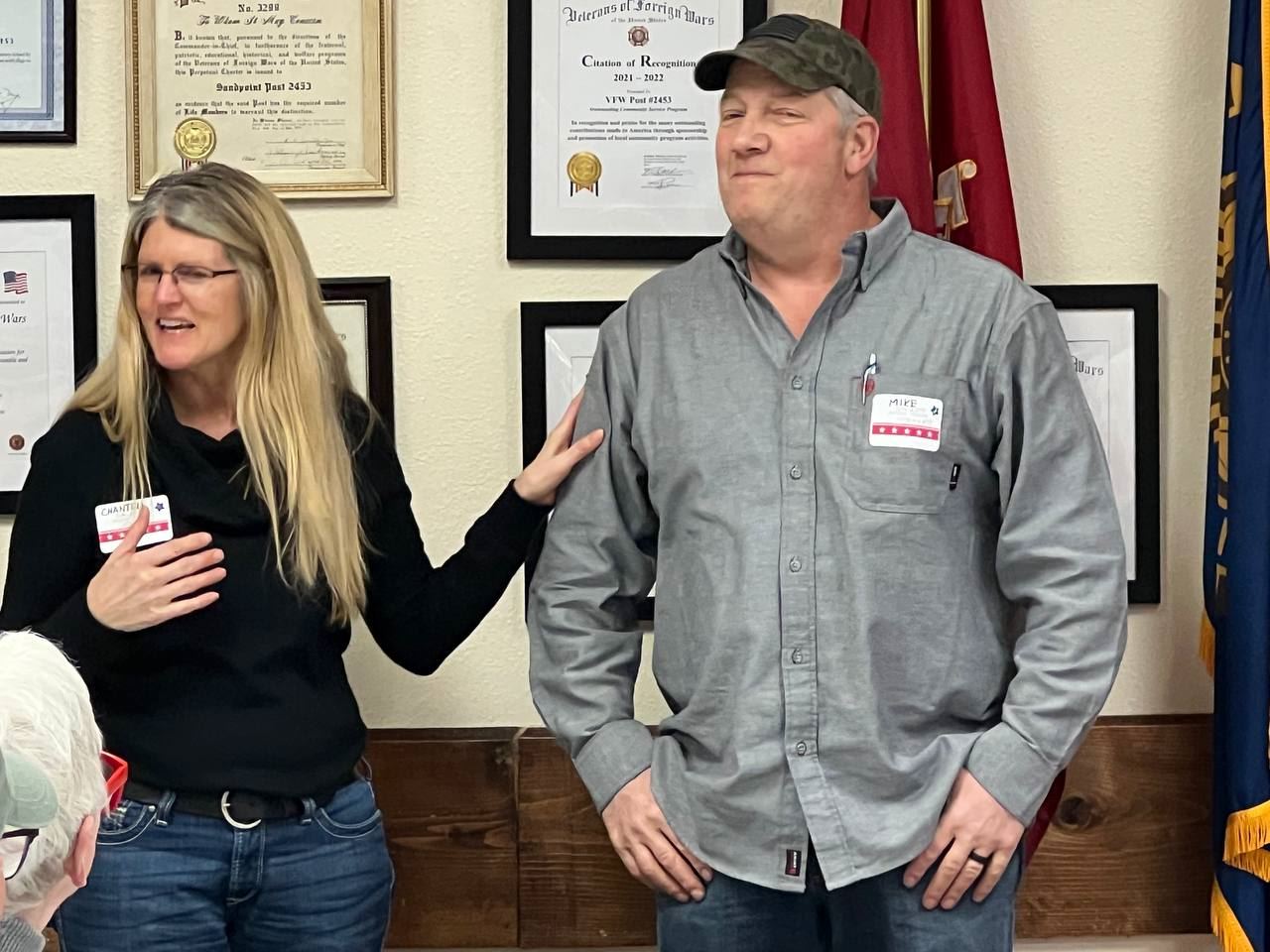|  EDUCATE AND ADVOCATE |
- Home
- Our Events
- Recent Events
- Sackett v. EPA
Michael Sackett v. EPA: A David-and-Goliath Battle for Property Rights |
Featured speakers Michael and Chantell Sackett narrated the story of winning their 16-year fight with the Environmental Protection Agency (EPA). The Sacketts spoke at the December luncheon meeting of the Bonner County Republican Women (BCRWI). Introduction: In the annals of environmental law, the case of Michael Sackett v. Environmental Protection Agency (EPA) stands as a landmark example of an individual standing up against a powerful government agency to defend property rights. This legal saga unfolded over 15 years, culminating in a significant victory for property owners and raising crucial questions about regulatory overreach. Background: The story began in 2004 when Michael and Chantell Sackett purchased a plot of land in Priest Lake, Idaho, intending to build their dream home. Even though they obtained the necessary local permits, the couple’s dreams quickly became a nightmare when the EPA asserted jurisdiction over their property under the Clean Water Act. The couple suspects a neighbor tipped the EPA to stop blocking their view of the lake.
In the same year, the EPA claimed that the Sacketts’ property contained wetlands and, as such, fell under federal jurisdiction. This assertion led to a compliance order demanding that the Sacketts either cease construction, restore the alleged wetlands, or face substantial fines – penalties amounting to over $32,500 per day. Legal Battle History: Feeling aggrieved by what they perceived as government overreach, the Sacketts decided to challenge the EPA’s compliance order in Court. Their case, Michael Sackett v. EPA, moved through the legal system, eventually reaching the U.S. Supreme Court. In 2007, the EPA told the Sackett family that their property was a wetland and filled it in violation of the Clean Water Act. To comply with the Clean Water Act, the EPA ordered the Sacketts to remove the waste fill and fence the area for three growing seasons, under penalty of a fine of $32,500 per day. In 2008, the Sackett family responded to the Environmental Protection Agency, saying that the EPA had no jurisdiction over their property because it was not a wetland. The U.S. District Court for the District of Idaho dismissed the Sacketts case for lack of jurisdiction. In 2010, the 9th Circuit affirmed the district court’s decision to dismiss the case for lack of substantive jurisdiction. In another case, the Ninth Circuit held that lands that met Justice Scalia’s plurality test of “continuous superficial connection” or Justice Kennedy’s test of “substantial connection” were considered “waters of the United States” for purposes of the jurisdiction of the United States CWA apply. The Sacketts case was brought before the United States Supreme Court in 2012. The issue before the Court was limited to whether the Sacketts could bring an action under the Administrative Procedure Act to challenge an order requiring compliance with a specific provision of the Sanitation Code. The Supreme Court reversed the Ninth Circuit’s decision, holding that Sackett’s order to comply with the lawsuit constituted a “final administrative action” that could be heard. The Ninth Circuit remanded the case. In 2019, the case was reopened in the U.S. District Court for the District of Idaho after being put on hold for several years in hopes of resolution. The district court denied Sacketts’ motion for summary judgment. In 2021, the Ninth Circuit affirmed the district court’s decision denying summary judgment. It ruled that the EPA had jurisdiction to designate the Sacketts property as a wetland under the Clean Water Act. In 2022, the United States Supreme Court issued a certificate determining whether the Ninth Circuit applied the proper test to determine whether the EPA had jurisdiction under the Clean Water Act to designate the Sacketts’ property as a wetland.
On May 25, 2023, the U.S. Supreme Court ruled unanimously in favor of the Sacketts, rejecting the EPA’s interpretation of “waters of the United States.” In this significant victory for property rights and the rule of law, the Supreme Court made clear, in the words of Justice Thomas, that “Sackett Land is not water, much less the water of the United States.” Although the Court did not directly quote it in the decision, it confirmed that MSLF argues that the EPA did not deserve consideration in this case because it refused to adopt a distorted definition that would have placed almost all of the country under the EPA’s jurisdiction over “marine waters.” of the United States.” The central question at the heart of the case was whether the Sacketts had the right to challenge the EPA’s compliance order before facing potentially ruinous fines. The EPA contended that such orders were not subject to pre-enforcement judicial review. At the same time, the Sacketts argued that denying them the right to challenge the order violated their due process rights. Supreme Court Decision: In a unanimous decision delivered in March 2012, the Supreme Court ruled in favor of the Sacketts. Justice Antonin Scalia, writing for the Court, held that the compliance order constituted final agency action and thus could be challenged in Court. The Court’s decision had profound implications, establishing that property owners have the right to seek judicial review before facing the total weight of EPA enforcement. The ruling was seen as a significant check on government agencies, ensuring citizens could challenge regulatory decisions that directly impacted their property rights.
Impact: Michael Sackett v. EPA sparked a broader conversation about the balance between environmental protection and individual property rights. The case underscored the importance of due process and the ability of citizens to challenge government actions that could have substantial consequences for their property and livelihoods. While the ruling did not definitively decide the merits of the EPA’s claim against the Sacketts, it reaffirmed the principle that citizens should have their day in Court before being subjected to potentially crippling fines. The case remains a symbol of the ongoing tension between regulatory authority and individual rights in environmental law. The Attorneys Damien Schiff served as the Senior Attorney, while Charles Yates and Paige Gillard rounded out the legal team, Conclusion: The Michael Sackett v. EPA case is a powerful example of an ordinary citizen standing up against a federal agency in defense of property rights. The Supreme Court’s decision affirmed the right of property owners to challenge EPA compliance orders in Court, emphasizing the fundamental importance of due process and judicial review in the face of government regulatory actions. The case’s legacy continues reverberating, influencing debates over the proper balance between environmental protection and individual freedoms. |
UPCOMING EVENTS |
Join us for our upcoming events
- There are no upcoming events.



